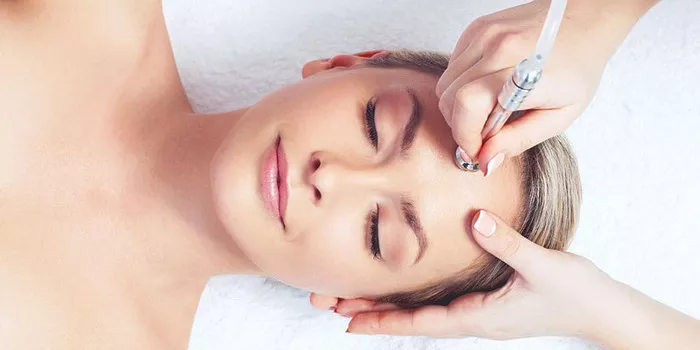Dark spots, also known as hyperpigmentation, can be a common concern for many individuals. These areas of increased pigmentation can be caused by factors such as sun damage, acne scars, hormonal changes, or aging. If you’re dealing with dark spots and seeking effective treatment options, you may be wondering, “Does microdermabrasion help with dark spots?” In this article, we will explore the benefits of microdermabrasion for addressing hyperpigmentation and achieving a more even skin tone.
Understanding Hyperpigmentation
Before discussing the potential benefits of microdermabrasion for dark spots, it’s important to understand what hyperpigmentation is. Hyperpigmentation occurs when the skin produces excess melanin, the pigment responsible for giving our skin color. It can manifest as dark spots, patches, or uneven skin tone in various areas of the face or body.
Common types of hyperpigmentation include:
- Sunspots or Age Spots: These are dark spots that develop as a result of prolonged sun exposure. They are typically seen on areas of the skin that are frequently exposed to the sun, such as the face, hands, shoulders, and arms.
- Post-Inflammatory Hyperpigmentation: This type of hyperpigmentation occurs after an inflammatory skin condition or injury, such as acne, eczema, or a cut. It appears as dark spots or patches in the affected area.
- Melasma: Melasma is a type of hyperpigmentation that is often triggered by hormonal changes, such as pregnancy or the use of hormonal contraceptives. It causes dark patches, usually on the forehead, cheeks, or upper lip.
How Does Microdermabrasion Work?
Microdermabrasion is a non-invasive skin rejuvenation procedure that involves the use of a specialized device to exfoliate the outermost layer of the skin. The device gently sprays fine crystals onto the skin while simultaneously using a vacuum suction mechanism to remove the exfoliated skin cells and crystals. This process helps to stimulate collagen production and reveal a smoother, more even-toned complexion.
Benefits of Microdermabrasion for Dark Spots
Microdermabrasion can be an effective treatment option for improving the appearance of dark spots and achieving a more even skin tone. Here are some key benefits of microdermabrasion for hyperpigmentation:
-
Exfoliation and Skin Cell Renewal
Microdermabrasion exfoliates the top layer of the skin, effectively removing dead skin cells and promoting the growth of new, healthy skin cells. This process can help fade dark spots by reducing the buildup of pigmented skin cells and encouraging a more even distribution of melanin.
-
Stimulation of Collagen Production
Microdermabrasion stimulates collagen production, which can help improve the texture and elasticity of the skin. Collagen is a key protein that supports the structure of the skin and can contribute to a more youthful and even complexion.
-
Enhanced Absorption of Skincare Products
By removing the outer layer of dead skin cells, microdermabrasion allows for better penetration and absorption of skincare products. This can enhance the effectiveness of other topical treatments or serums targeted at reducing hyperpigmentation.
-
Improved Skin Texture and Tone
In addition to addressing dark spots, microdermabrasion can help improve overall skin texture and tone. It can minimize the appearance of fine lines, acne scars, and uneven skin texture, resulting in a smoother and more radiant complexion.
-
Minimal Downtime and Side Effects
Microdermabrasion is a non-invasive procedure that typically involves minimal downtime and side effects. It is considered safe for most skin types and tones, with minimal risk of complications or adverse reactions.
Considerations and Limitations
While microdermabrasion can be beneficial for treating dark spots and hyperpigmentation, it’s important to note that individual results may vary. The effectiveness of microdermabrasion for dark spots depends on factors such as the severity of the hyperpigmentation, the underlying cause, and the consistency of the treatment.
For more significant or stubborn hyperpigmentation, multiple sessions of microdermabrasion may be needed to achieve desired results. It’s also worth mentioning that microdermabrasion may not be the most effective treatment option for certain types of hyperpigmentation, such as deep-set melasma. In such cases, your dermatologist or skincare professional may recommend alternative treatments like chemical peels, laser therapy, or prescription-strength topical medications.
Conclusion
Microdermabrasion can be an effective treatment for reducing the appearance of dark spots and achieving a more even skin tone. By exfoliating the outermost layer of the skin and stimulating collagen production, microdermabrasion helps fade hyperpigmentation and improve overall skin texture and tone. However, individual results may vary, and the effectiveness of microdermabrasion depends on factors such as the severity of the hyperpigmentation and the underlying cause. If you’re considering microdermabrasion for dark spots, consult with a qualified skincare professional or dermatologist who can assess your specific concerns and recommend the most suitable treatment plan for achieving your desired results.


